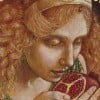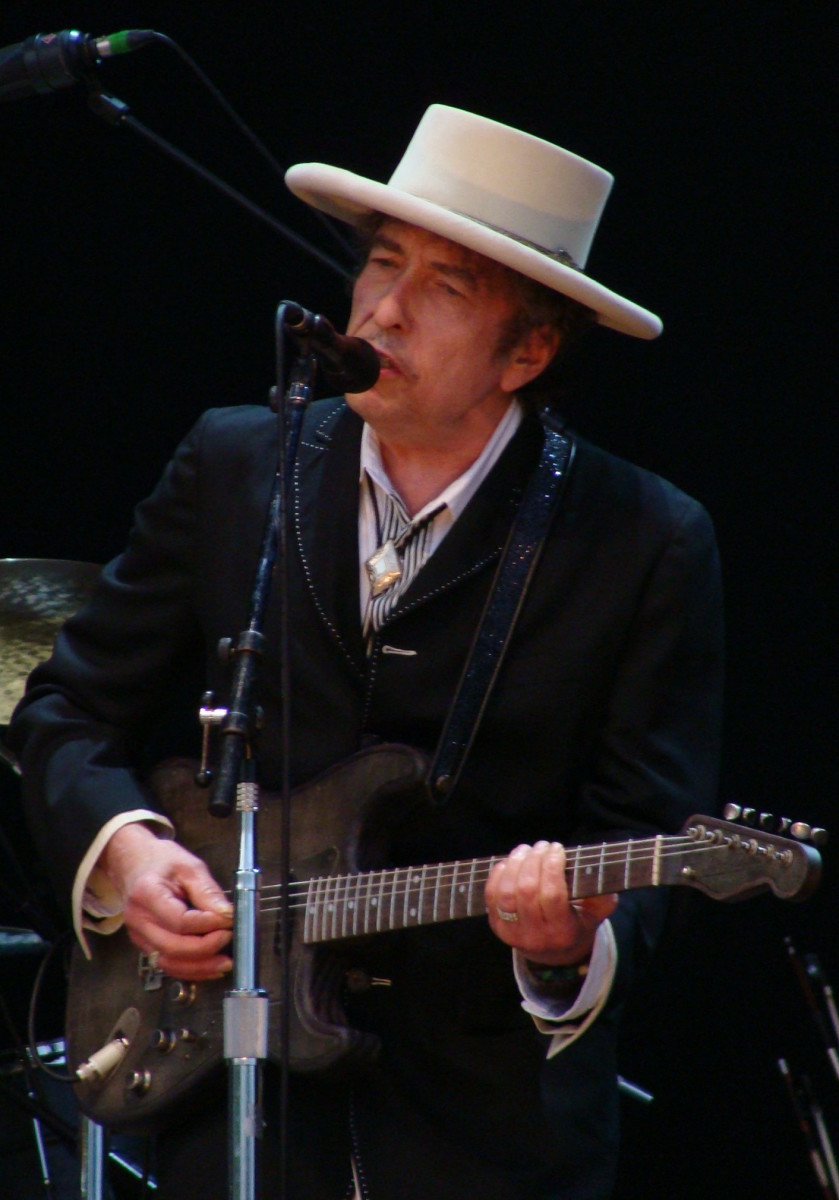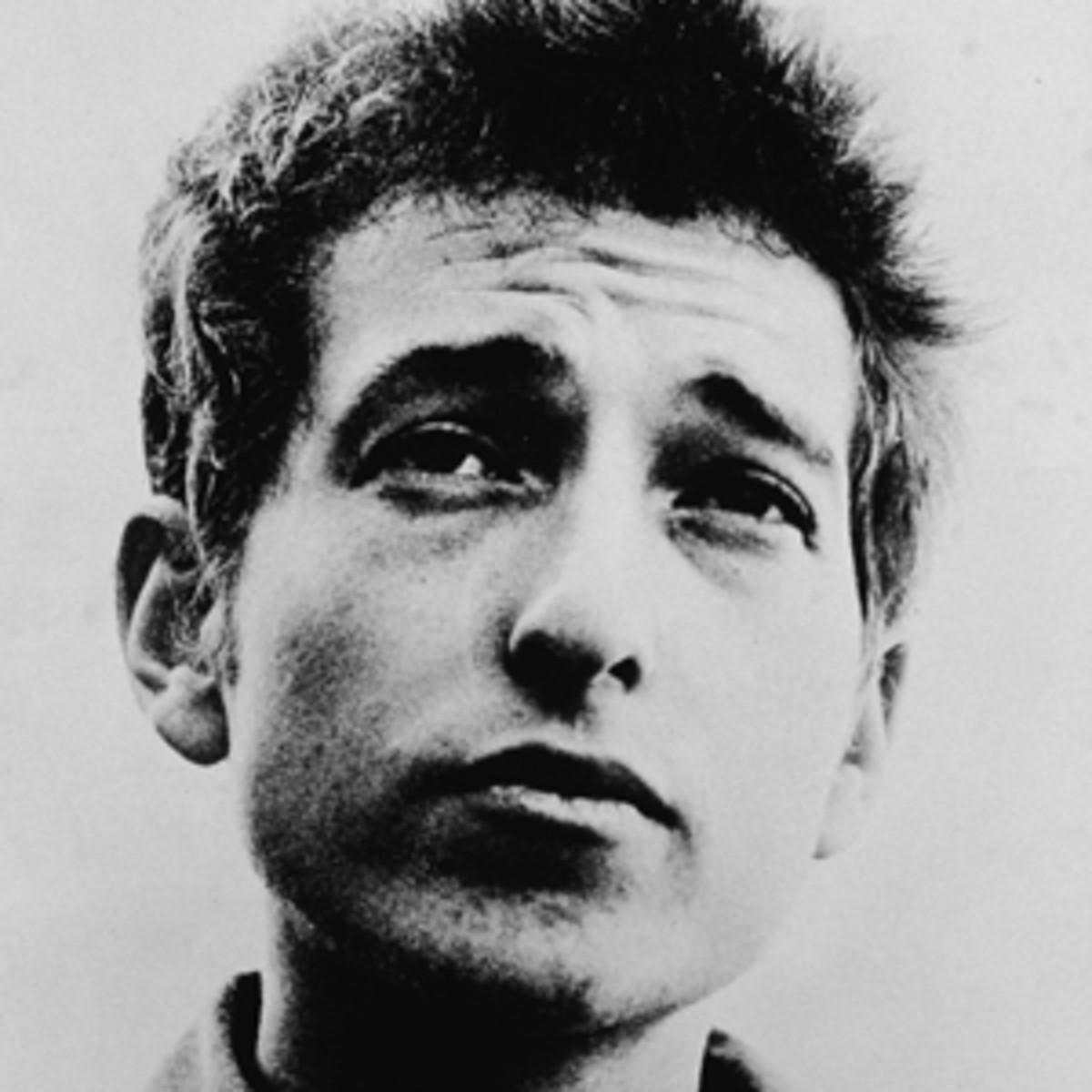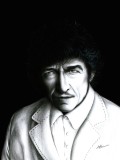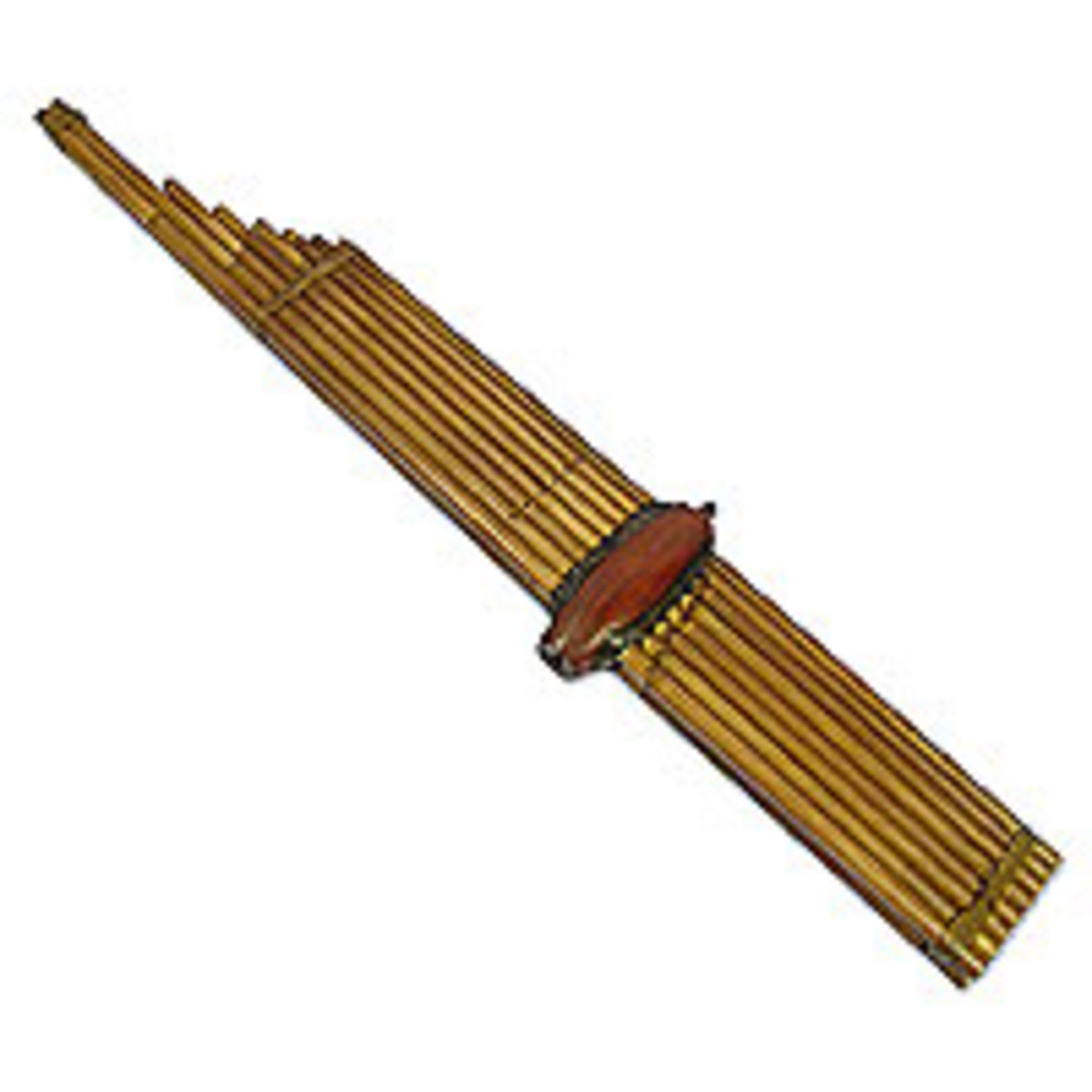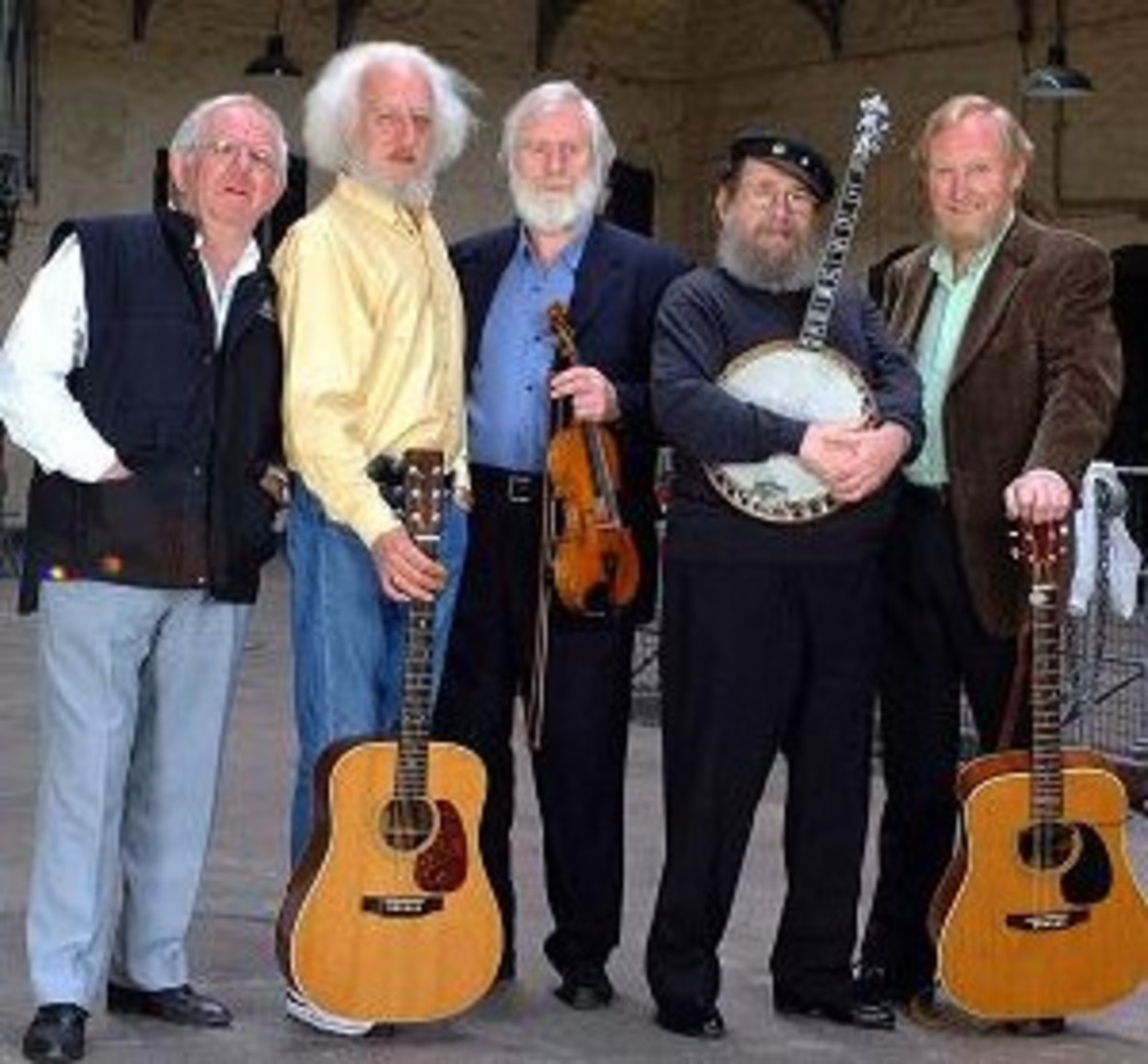A Tribute to Bob Dylan

This is my tribute to Bob Dylan, who is one of the most influential and most loved singers, songwriters and poets of my generation. What was it about Bob Dylan? He had a voice (Joyce Carol Oates says) "like sandpaper singing". A raspy, husky voice, not always on key. Bob Dylan's guitar playing sounded simple but if you've ever tried to play a Bob Dylan tune yourself, there was a lot more going on there than the standard chord changes.
Bob Dylan's lyrics were his very own: unique. He had a unique voice in music that expressed many things for many people. His extraordinary way with words made so very many people of our generation sit up and listen. He used alliteration and fanciful imagery lavishly, and behind that was a message so powerful and heartfelt and true, that people were compelled to pay attention.
Bob Dylan was an absolutely charming performer, as well. He had the shy, boyish good looks and curly locks well into his early middle age that made women fall over themselves to get his autograph; to get close to him. Joan Baez said that he made her "want to mother him, her, Joan Baez, in whose heart she thought all mothering was long dead."
And Bob has that very special thing that some performers are blessed in abundance with: charisma. It's hard to define but infinitely powerful. Bob Dylan has a sense of humour as well: I had to laugh to see his response to the paparrazzi that were driving him crazy. He bought a camera and as they were clicking away, taking pictures of him, he was clicking away, taking pictures of them. It was really funny, and a great and graceful response to that form of harassment.

Bob Dylan was born on May 24, 1941, in Duluth, Minnesota. He grew up in Hibbing, Minnesota, from the age of six, when his dad died of polio and his mom returned to her hometown. Hibbing was typical of the great Midwest of the United States. He said his hometown had about six blocks, total, for downtown, and most of the people were farmers. It was a way of life that's fast disappearing from the American scene. It was very rural. The main industry, which was strip mining for coal, had long since gone away, so the town was dwindling: disappearing into nothing.
Bob Dylan's birth name was Robert Allen Zimmerman, and his people were Jewish. There was some anti-Semitism where he grew up, but there was also a small but very close-knit Jewish community that gave its support.
Bob Dylan didn't belong there. He always felt out of place, like he was "born to the wrong parents" or something. I don't think they had much money, either, though Bob worked for his uncle, who ran an electrical appliance store. He remembers: "It was rightly cold. We didn't have the clothes then...we wore two-three shirts and slept in our clothes to keep warm."
Bob worked on his music all through high school, with indifferent success. The midwest was not the place for him. They loved smooth, melodic voices and simple, sing-along lyrics. It was the Mitch Miller crowd and Bob Dylan was into Woodie Guthrie; also rock 'n' roll.
Bob Dylan found himself in New York City, which was a mecca for the beatniks of his generation. He played in coffee shops all over Greenwich Village. He loved the scene there and absorbed everything from all the varied performers and poets and singers and guitar players. Greenwich Village in the early sixties was Bob Dylan's playground; it was also his school.
His friends said that Bob Dylan was very astute: he not only could pick up songs and lyrics and guitar-picking styles and performance styles very quickly; he also could pick out the most important people career-wise and make an impression on them. If that's so, nobody blamed him. All the young performers in the Village were hungry then: they were hungry for recognition, for recording contracts, for food and a place to sleep. Most of those young people, including Bob, were very far from home and had not many pennies to bless themselves with.
So Bob hung out in Washington Square, and visited and played in Tin Pan Alley, where they passed the basket after he played. He took in everything and kept what worked for him, eventually writing his own music, forming his own style.
Bob's original intent in hitchhiking to New York with a couple of dollars in his pocket was to visit Woodie Guthrie, which he succeeded in doing. Bob Dylan was shocked at the state of the man, whom he met in hospital; poor Woodie was mortally ill.
John Hammond signed Bob Dylan to Columbia records in October of 1961. His first album, "Bob Dylan", sunk like a stone, selling only 5000 copies, just enough to break even. Dylan performed as a back-up musician on several artist's recordings, using a variety of pseudonyms, including:
- Blind Boy Grunt
- Bob Landy
- Tedham Porterhouse
but it wasn't until he signed with Albert Grossman for an agent and legally changed his name to "Bob Dylan" in August of 1962 that Bob started to hit the big time.

Bob Dylan became the darling of the protest movement of the sixties, partly because of his close association with Joan Baez, and also because of the lyrics of "Blowin' in the Wind".
Mavis Staples, a wonderful black singer and a wonderful lady, said of those lyrics:
"That's what my father felt, being a black man in America. How many roads must a man walk down, before they call him a man? That's what my father felt, who was addressed as "boy" well into his old age...White people didn't have these problems...how did this young white guy know?"
So Bob's music and lyrics were adopted by a generation of people who were protesting the despicable treatment of black Americans. His lyrics cut to the heart. They were interpreted in a variety of ways by his listeners; Bob often said he was NOT a protest singer...the lyrics spoke truly for all manner of people, all kinds of situations.
Bob Dylan was there when Dr. Martin Luther King gave his famous "I Have a Dream" speech, and played "Blowin' in the Wind" by request. They were both asking in different ways to have people everywhere accorded simple human dignity and courtesy that should be the right of all...
I remember those times, and I remember seeing a film clip on the news of a young black man being dragged away from a hot-dog stand, being beaten about the head and shoulders and kicked in the ribs as he curled up in a protective ball on the sidewalk...the man simply wanted to buy a hot dog. He was being punished for being black, and attempting to patronize a "white" establishment. These terrible things happened routinely in America at that time. Black people were oppressed beyond belief, beyond sanity, in a weird attempt to keep black Americans separate and segregated from white Americans.
If Bob Dylan was a reluctant icon of the protest movement, he was at heart a liberal person and in accord with the movement itself, though uncomfortable with his imposed role in it. He wanted to be free to express whatever he needed to in his music and lyrics, and not get locked into a label.
Whether reluctant or not, his music and lyrics were effective in raising the consciousness of America's youth in the sixties, and that's what matters.
Protesters were also burning draft cards and protesting the Vietnam War.
Listen to the lyrics of Bob Dylan's "Masters of War". It's suitable and topical and a valid protest of any war, of any generation, and absolutely true. The wars are made by profiteers and politicians, who are on the side of the profiteers.
Bob Dylan went electric in 1965, or thereabouts. He made a recording, "Bringing it All Back Home", with the mostly electric (including Subterranean Homesick Blues) on side A and four songs that reverted to acoustic on side B, including the much beloved "Tambourine Man".
A lot of people had problems with that. They wanted the "real" Dylan, the guy with the harmonica and acoustic guitar. On the whole, Bob Dylan going electric was met with hostility.
Mike Butterfield remembers playing a big gig with Bob Dylan at the Newport Folk Festival, and getting boos and jeers from most of the crowd during their electric set, EXCEPT when playing "Rainy Day Woman" (aka, "Everybody Must Get Stoned)...then, the crowds roared their approval.
Robbie Robertson, of The Band, Dylan's electric backing group, remembers getting boos and jeers during the London performance; the crowd was overtly hostile to Bob's electric set, and wasn't that much more receptive to his acoustic set. Bob Dylan said afterwards, "I wonder why the tickets sell so fast..."
Later, in July 1965, Bob Dylan released "Like a Rolling Stone" as a single, and it went viral all throughout the US and the UK. Bob' s music wasn't dead...it was alive and well and living in LA...and secretively married to a model, Sara Lownds.
Dylan went on a world tour in 1965, which exhausted him. He was doing amphetamines just to keep going. He returned to home in Woodstock, New York, and crashed his motorcycle, hurting his neck. Bob wasn't hospitalized from the accident, nor was an ambulance called to the scene...it was a reason to give Bob a much-needed break from his performing and recording schedule, and some much-needed privacy from the media and public.
Bob Dylan has performed and recorded sporadically throughout all the intervening years and is still going today. Bob won an Oscar, for his song "Things Have Changed" in the film "The Wonder Boys". It isn't surprising, considering Bob's undying talent.
- 2003: A recording of gospel music
- 2004: the first part of Bob Dylan's autobiography, "Chronicles"
- 2005: Martin Scorsese's film bio, "No Direction Home"
- 2007: Bob Dylan earned the unlikely distinction of being the most quoted poet/lyricist by judges and lawyers, more than any other poet/lyricist/singer or songwriter.
- 2006: Bob Dylan released his "Modern Times" album, which won two Grammys, one, the album itself for Best Contemporary Folk/Americana Album and also Best Solo Rock Vocal Performance for "Someday Baby". It was a breakout album in that it was released on iTunes, along with his entire music opus, 773 songs total.
- 2009: Bob Dylan's "Together Through Life" album was released and made Number One on the Billboard charts, making Bob the oldest recording artist (at age 67) to ever debut at Number One.
- Also 2009: Bob Dylan's Christmas album, "Christmas in the Heart", which is a don't-miss for all Dylan fans, everywhere.
- 2010 saw a re-release of some treasured Bob Dylan Bootleg series; also, from an almost-lost archive, a performance at Brandeis University in 1963.
Bob Dylan is still touring, still recording music. He's a musician and a poet in his very soul, and will be to the end.
